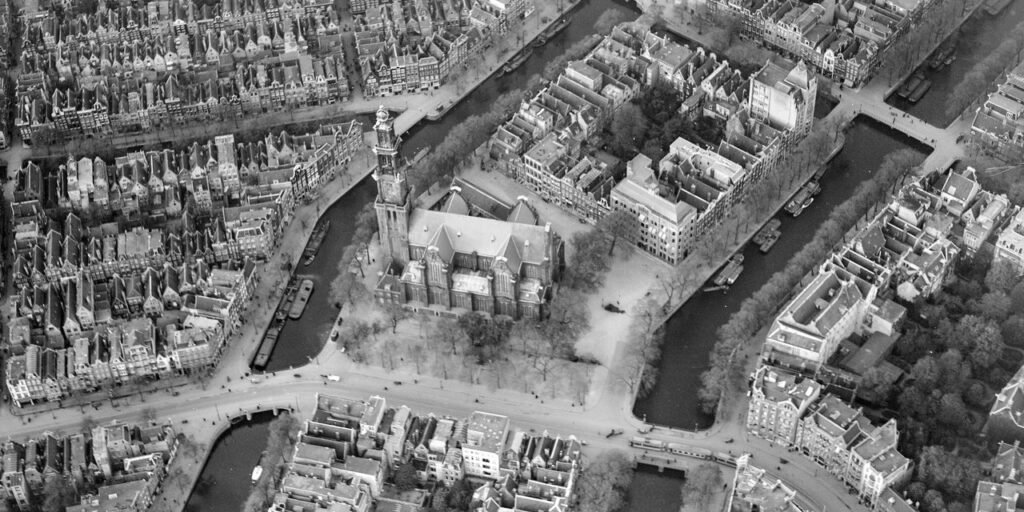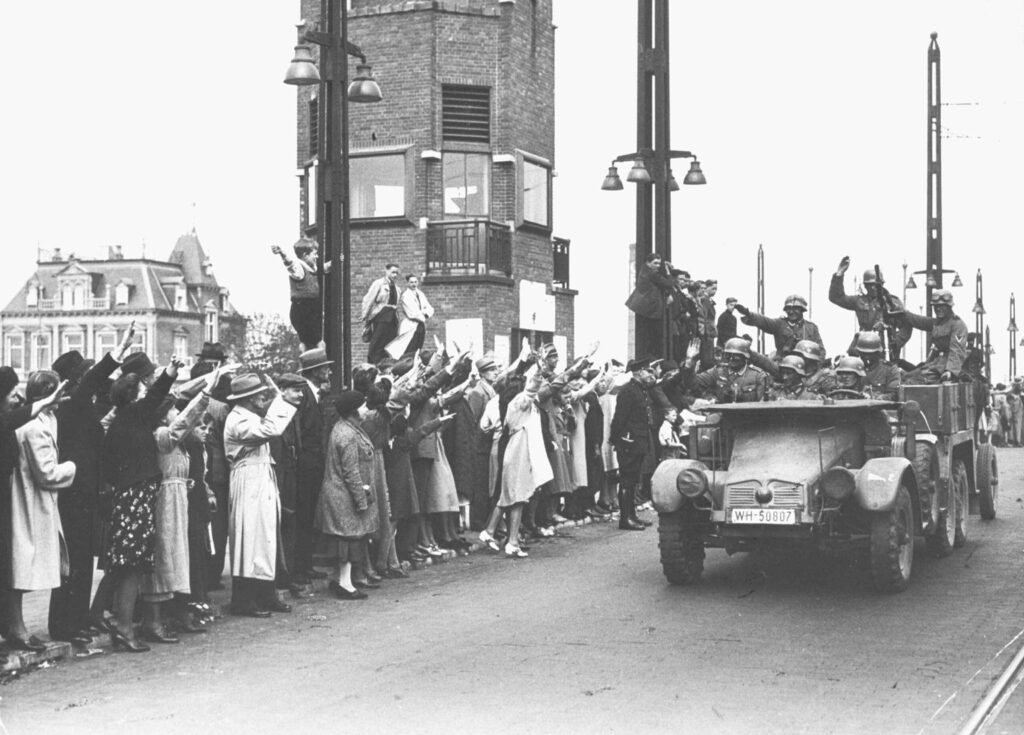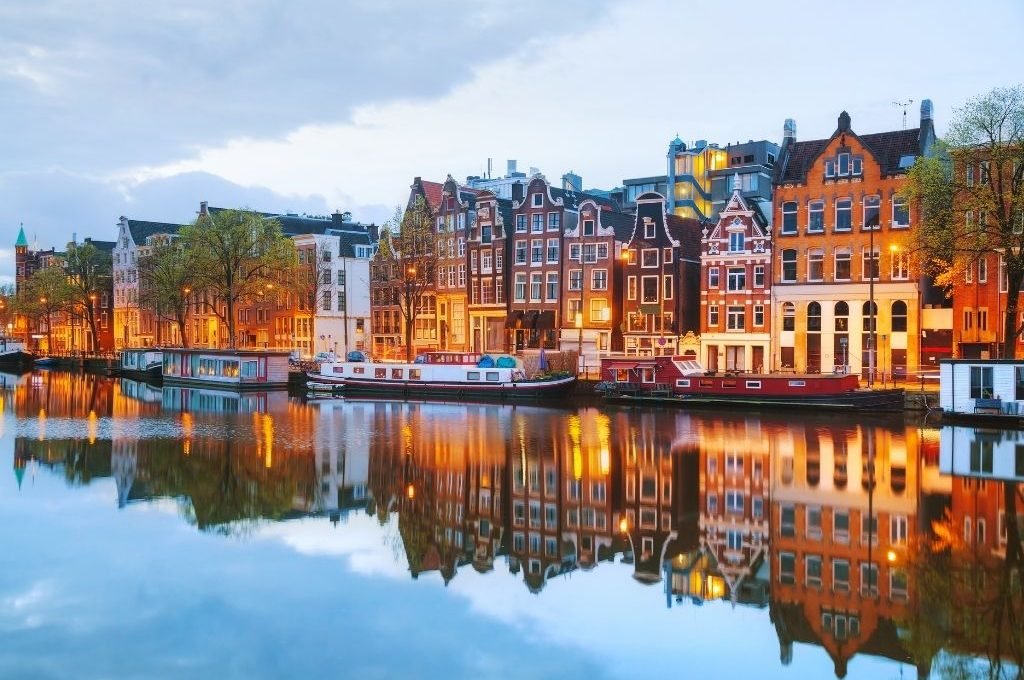Amsterdam Then and Now
Amsterdam Then
Amsterdam, the capital city and port of the Netherlands, is situated in the western part of the country, on the shores of the IJsselmeer, a large lake that was once part of the North Sea.
Its location is significant because it lies in what was historically wet peatland, an area that was challenging for settlement due to the soggy, marshy conditions.
This unique geography delayed the establishment of Amsterdam compared to other urban centers in the Low Countries.
The city’s origins date back to the late 12th century, when it began as a small fishing village situated on the Amstel River.

Over time, it expanded due to its strategic position for trade and its connection to the water network, ultimately becoming a major port city.
The development of Amsterdam, alongside extensive efforts to reclaim land from the sea through draining and dike construction, has shaped it into the thriving metropolis known today.
Related Article: Berlin Then and Now
Amsterdam History
Amsterdam’s origins can be traced back to the 13th century when it began as a small fishing village near the Amstel River.
The city’s early inhabitants had to contend with flooding, which led them to build dikes on both sides of the river.
Around 1270, they constructed a dam between these dikes, which marked the beginning of Amsterdam’s development.
Over time, the city grew into an important trade center, acting as a vital link between northern Europe and Flanders (modern-day northern Belgium and northern France).
Related Article: Paris Then and Now
The first mention of Amsterdam’s name appeared in a 1275 document that granted the people near the dam a toll privilege, and by 1306, the city had received its full charter.
As the city prospered, it became an important hub of commerce, particularly after the fall of Antwerp in 1585.
When Spanish forces recaptured Antwerp, many Protestant refugees fled to the northern Netherlands, including Amsterdam, enriching the city’s intellectual, cultural, and commercial life.
The influx of these refugees, including merchants and Jews expelled from Portugal and Eastern Europe, helped solidify Amsterdam’s position as a global trading metropolis.
Related Article: London Then and Now
During the 17th century, known as the Dutch Golden Age, Amsterdam emerged as the world’s financial, trading, and cultural center, leading to massive urban development and the establishment of institutions like the Athenaeum Illustre in 1632.
However, the city’s dominance began to decline in the 18th century as London and Hamburg overtook Amsterdam as the leading trade centers.
Amsterdam suffered further during the Napoleonic era when trade was disrupted and the city was occupied by the French.
Related Article: Phnom Penh Then and Now

The restoration of Dutch rule in the 19th century, along with the revival of trade with the East Indies, helped restore Amsterdam’s prosperity.
By the 20th century, the city experienced significant growth, although it faced challenges such as the occupation during World War II and the loss of its Jewish population.
After the war, Amsterdam entered a period of reconstruction, and by the 1950s, the economy had boomed.
Related Article: Kathmandu Then and Now
However, the 1960s marked a period of profound social and cultural change, as Amsterdam became a center for radicalism and libertarian ideals.
The city’s tolerance for different lifestyles, including recreational drug use and prostitution, became internationally recognized.
Despite the intensity of protests and riots during this time, Amsterdam’s public life in the 20th and 21st centuries has remained marked by its commitment to tolerance and social progressivism.
Related Article: Colombo Then and Now
Amsterdam Now

Amsterdam, the capital and most populous city of the Netherlands is located in the province of North Holland, though the capital of the province is Haarlem.
The city has a population of 921,402 within its city limits, and its metropolitan area, which includes the surrounding urban areas, is home to nearly 2.5 million people.
Known for its distinctive landscape, Amsterdam is often called the “Venice of the North” because of its extensive canal system, which has earned UNESCO World Heritage status.
Related Article: Dhaka Then and Now
The city’s geography is characterized by its flat, reclaimed land, with much of it lying below sea level—at an elevation of approximately −2 meters (−6.6 feet).
This low-lying area is surrounded by polders, or drained land, which has been key to Amsterdam’s development over the centuries.
As the commercial and financial center of the Netherlands, Amsterdam plays a vital role in both national and international trade.
Related Article: Lahore Then and Now
The Port of Amsterdam is the fifth largest in Europe, and the city’s main airport, Schiphol, is the busiest in the country and ranks among the top airports in Europe and globally.
Amsterdam is also a leading hub for technology, ranking 4th globally as a tech center in 2019.
Despite its modern economic achievements, Amsterdam faces challenges such as immigration and ethnic segregation, with about 180 nationalities represented within the city.
Related Article: Karachi Then and Now
The city is known for its urban density, with 4,457 inhabitants per square kilometer within the city proper.
It covers 219.4 square kilometers and is a highly urbanized area, with numerous parks and nature reserves accounting for about 12% of the land area.
Related Article: Istanbul Then and Now
Amsterdam’s reputation as a multicultural metropolis is reflected in its diverse population and its vibrant cultural scene.
However, issues related to housing and social integration are ongoing as the city continues to grow and evolve.
Related Article: Riyadh Then and Now
FAQs
Amsterdam is part of Europe, specifically in the Netherlands. It is not part of the United Kingdom.
Amsterdam is famous for its picturesque canals, rich cultural history, historic architecture, world-class museums (like the Rijksmuseum and Van Gogh Museum), and vibrant, multicultural atmosphere. It’s also known for being a hub for international business and innovation.
Amsterdam is sometimes called “Sin City” due to its liberal attitudes toward activities such as legal prostitution, cannabis use, and its open-minded approach to personal freedoms.
These aspects of the city attract many visitors seeking a more permissive environment.
Yes, Amsterdam can be quite expensive, especially when it comes to housing, dining, and tourist activities.
However, it offers a wide range of options that cater to different budgets, from budget-friendly accommodations to high-end luxury experiences.






























